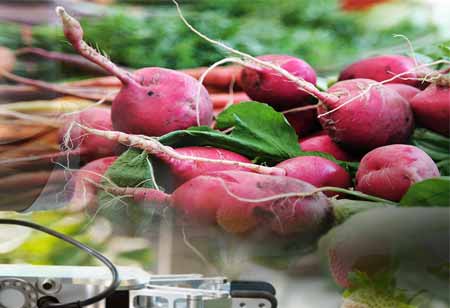Thank you for Subscribing to Food Business Review Weekly Brief
Refining Your Bakery Production Line: Large Bakeries
Like every other business, bakeries must compete effectively. They must constantly refine and improve their products.

By
Food Business Review | Monday, September 26, 2022
Stay ahead of the industry with exclusive feature stories on the top companies, expert insights and the latest news delivered straight to your inbox. Subscribe today.

To meet changing consumer demand, they must consider their methods, processes, and ingredients.
FREMONT, CA: Like every other business, bakeries must compete effectively. They must constantly refine and improve their products.
To meet changing consumer demand, they must consider their methods and processes and the ingredients they utilize.
Central to this is quality control & assurance and the ability to analyze ingredients and products through advanced baking technology. One such fraction of technology is the C-Cell baking quality analyzer.
Here are five ways of improving your production line if you're running a large bakery.
1. Quality Test Your Raw Ingredients
If you're going to bake constantly high-quality products, you need to ensure that your raw ingredients are of consistently high quality too.
This quality control is essential to refining your baking production – if the ingredients aren't good enough, nothing you can do will repay for this.
These ingredients incorporate Flour, Yeast, Water, Sugar, Salt, and Fat.
Flour and yeast are particularly critical. Alterations in the amount and quality of protein in flour can have a big effect on your baking. Likewise, yeast loses potency over its lifetime, a short period of around a month.
Effective quality control implies establishing clear specifications for each ingredient and carrying out standardized tests and sample analyses. If ingredients fail to meet these specifications, you should reject them and communicate any issues to your suppliers.
Consider the quality parameters carefully you're going to work to, such as:
• Protein, ash, and moisture content
• Particle size distribution
• Permissible levels of contaminants, like mycotoxins
• Rheological tests
• Dropping number tests for enzyme activity.
2. Test Your Bakes
Refinement arises from repeating processes and making small changes where necessary.
It's crucial to gauge the impact of these changes and how they influence key factors and features in your baked goods, including:
• Crust
• Crumb Structure
• Colour
• Internal Characteristics
• External Features
Using the C-Cell baking analyzer, you can get objective measurements of essential baking characteristics to support the improvement of your baking production.
When you implement a test sample to C-Cell, the instrument will measure:
• Colour – l*a*b* color results, along with data such as internal crumb color, external crust color, and depth
• Shape – the visual presentation of the sample, registering its concavity, shoulder and bottom roundness, and oven spring
• Dimensions –several measurements for each sample slice, comprising the area, width, and dimensions for optimum packaging
• Cell size – measuring cell size to assess holes, cell areas, volumes, and wall thickness
• Extension – crumb cell extension measurement signifies how well the sample molds.
3. Monitor and Adjust Your Baking Production
At various stages of the baking process, there are opportunities to make small adjustments to improve quality, reduce costs and drive efficiency.
Enhancing dough quality is a primary means of adjustment. At Dough mixing relative baking process start, and recipe and batch control is essential for repeatable product quality.
At the dividing stage, careful dough handling is vital to avoid damage to the dough structure. Controlling the force you employ on the Dough will help guarantee that you maintain dough quality.
Monitoring and adjusting these processes can also support you save on ingredients such as yeast and flour improvers while boosting your yield.
Building monitoring and measuring your processes using technology is the key to future-proofing your baking production and ensuring product consistency.
4. Benchmark and Optimise Your Processes
You should be fixing clear benchmarks for your bakery production. Automation will bring specific efficiencies, but on its own, it's not enough to guarantee the consistency of the finished product you require.
Consider which processes risk baking quality if you don't track them and ensure their consistency.
These incorporate:
• Mixing – variations in temperature or mixing time can impact product quality.
• Sheeting and molding – if you damage the structure of Dough during these molding processes, it can release gases before baking or damage its cell structure.
• Baking – Using the wrong oven temperatures can impact the oven spring of a loaf and interfere with the whole baking process.
• Cooling – the main target here is to decrease the internal temperature of the bread to attain an optimum temperature that enables the loaf to keep. Still, cooling too rapidly can cause the sidewalls of the loaf to collapse.
Objective & scientific baking quality analysis supports process benchmarking and optimization, addressing potential processing issues affecting quality.
5. Use Objective Methods to Measure Characteristics
The traditional way of measuring features in baked goods, such as crumb texture and flavor, crust color, and loaf volume, is subjective. It comprises taste, smell, and touch.
But to satisfy the demands of a large bakery production line, you need more efficient and advanced testing methods.
These should be objective, based on solid data and in-depth analysis other than sensory impressions.
This is where C-Cell can contribute to baking processes, optimize production lines and enhance the quality and consistency of finished products.
It can offer a detailed and objective analysis of samples in just five seconds, using high-definition imaging.
C-Cell also offers extra features, such as the optional bread-scoring system. Bread Score is according to precision-based image capture and measurement of critical parameters, comprising:
• Number of cells
• Net cell elongation
• Non-uniformity of cells
• Cell diameter
• Number of holes
• Wall thickness.
The scoring system will connect with the bakery's defined criteria and benchmarks. This gives essential and practical support to bakeries looking to refine their baking production.






